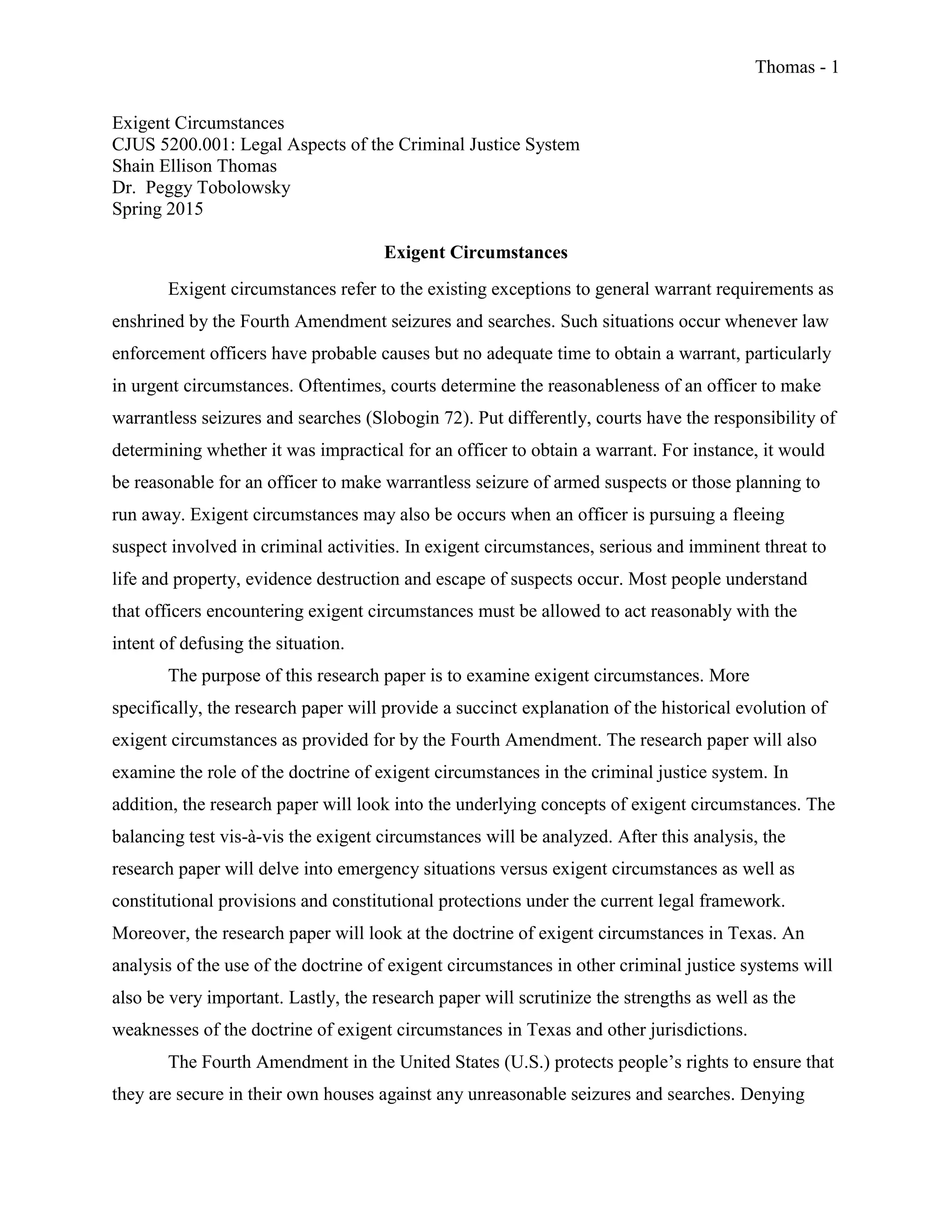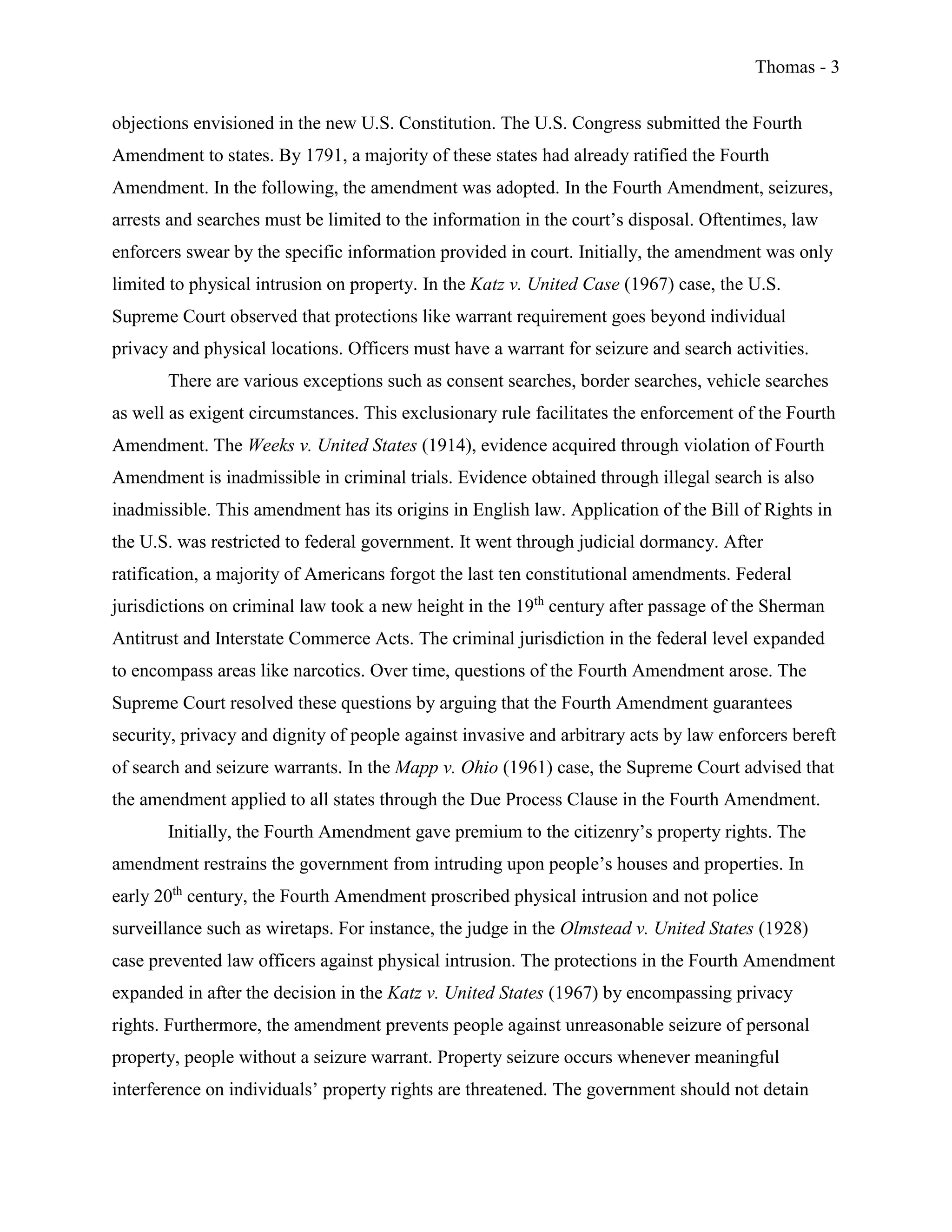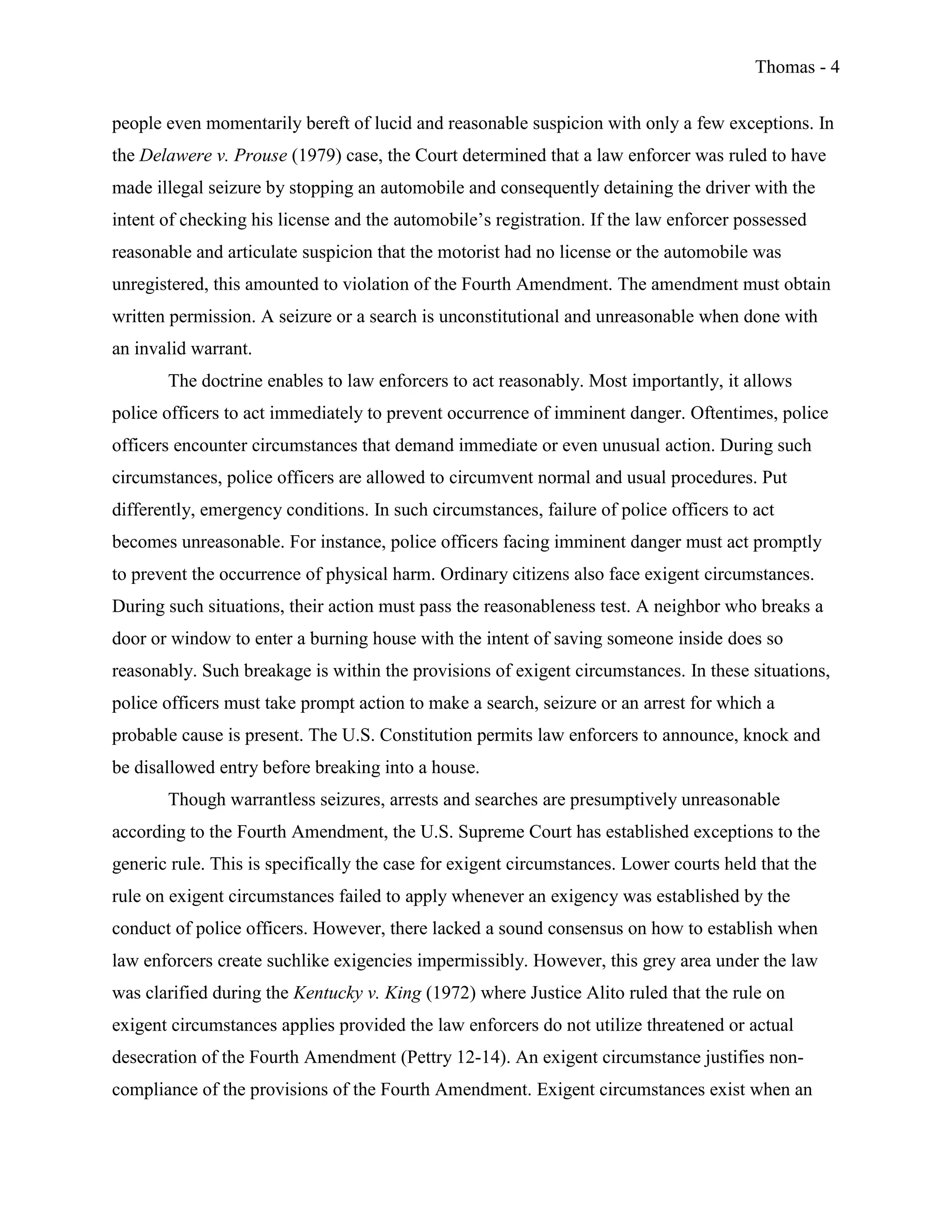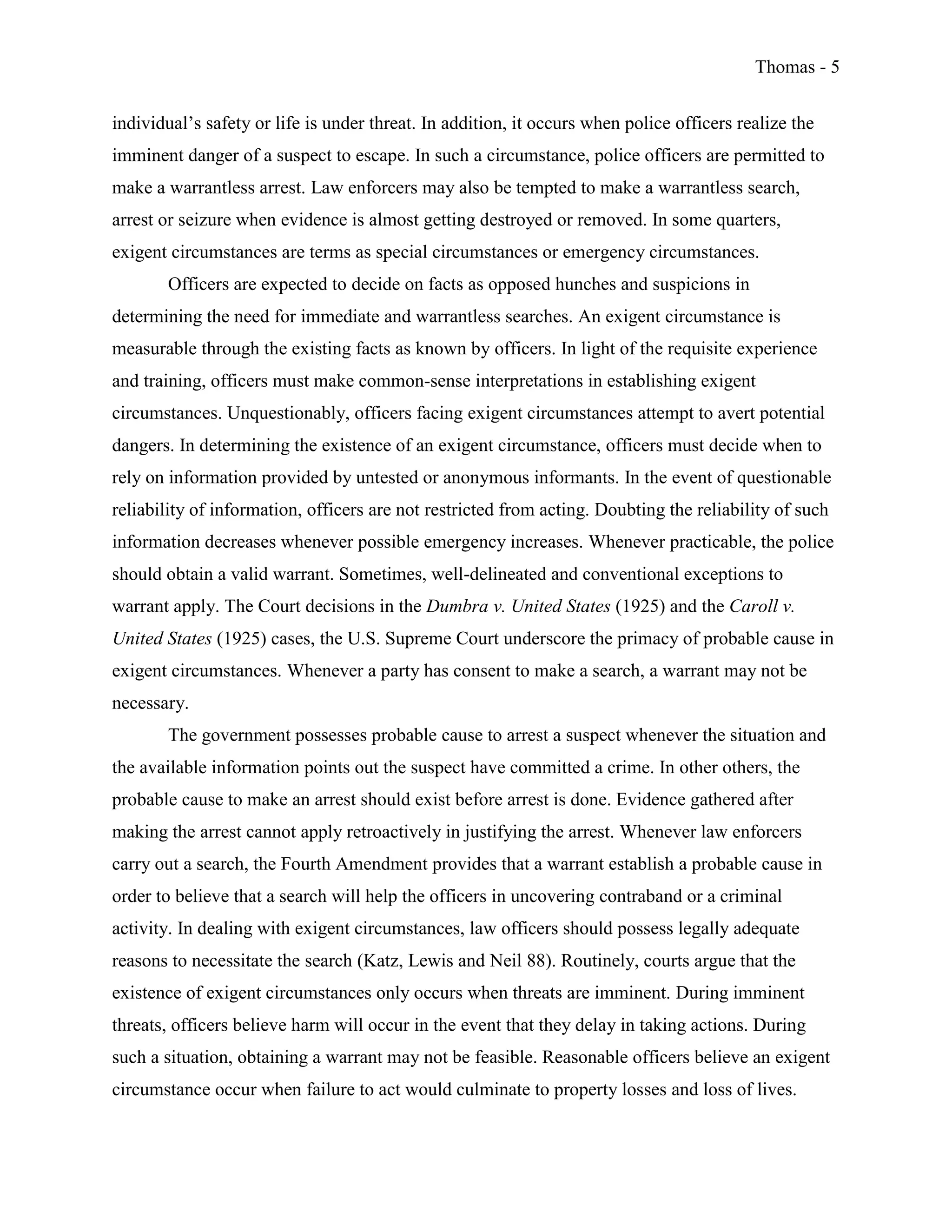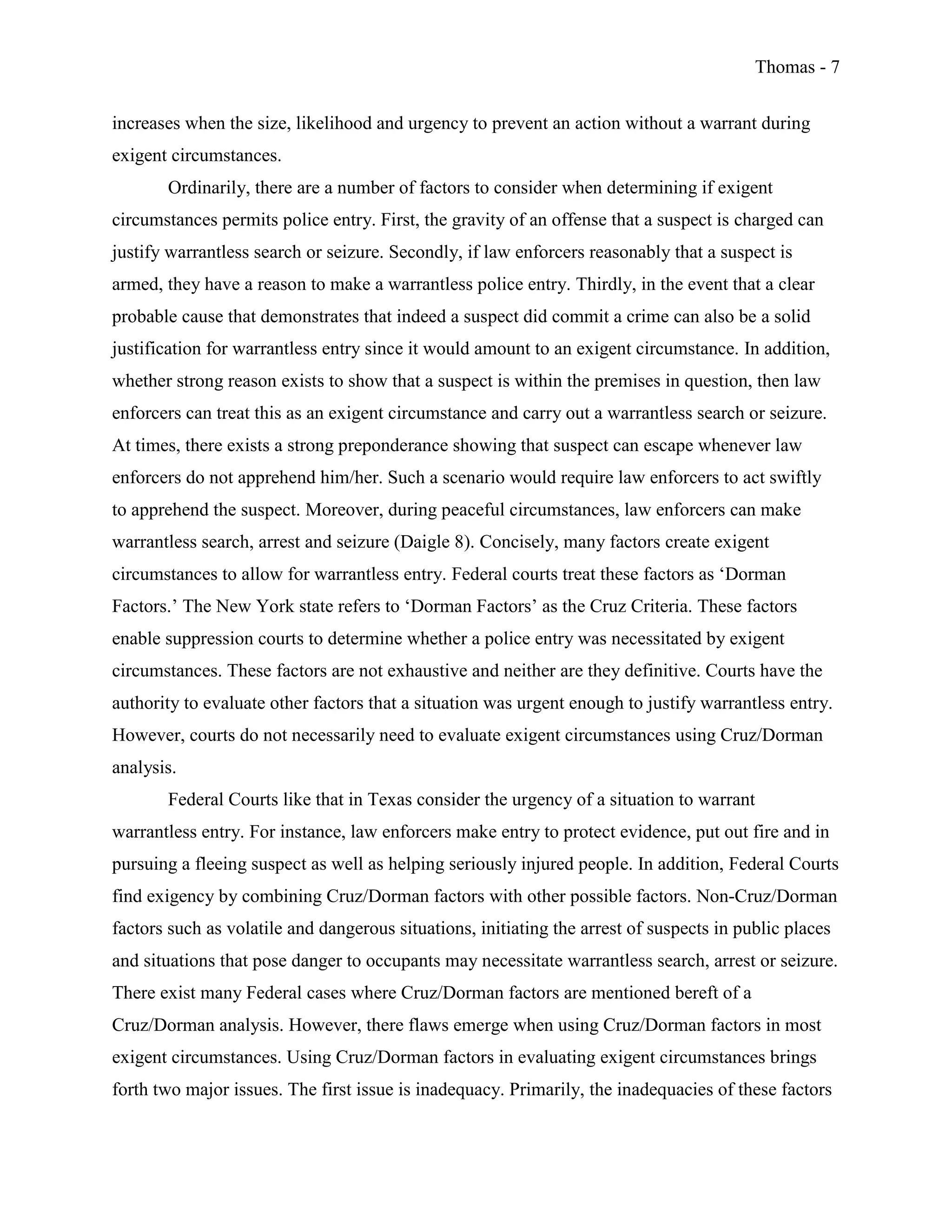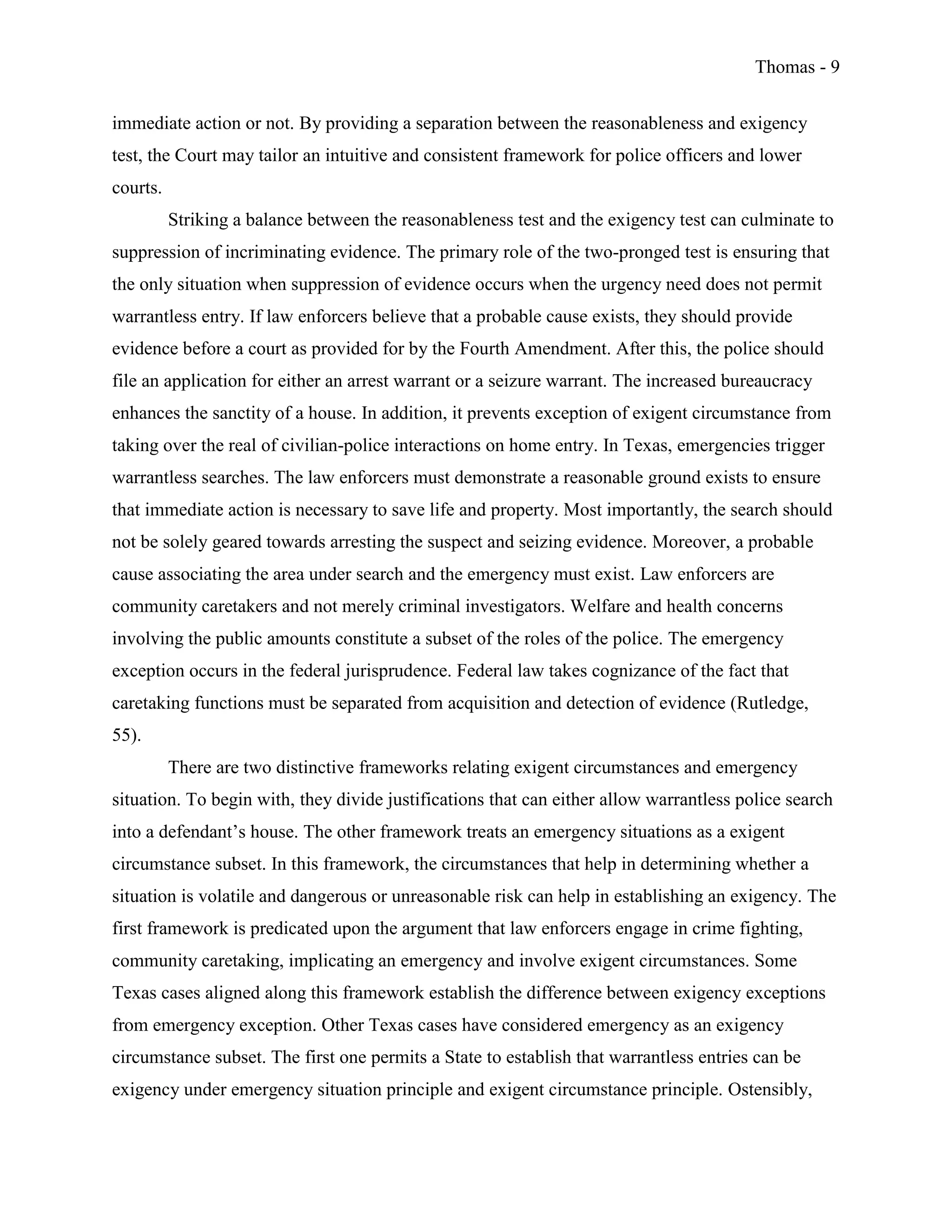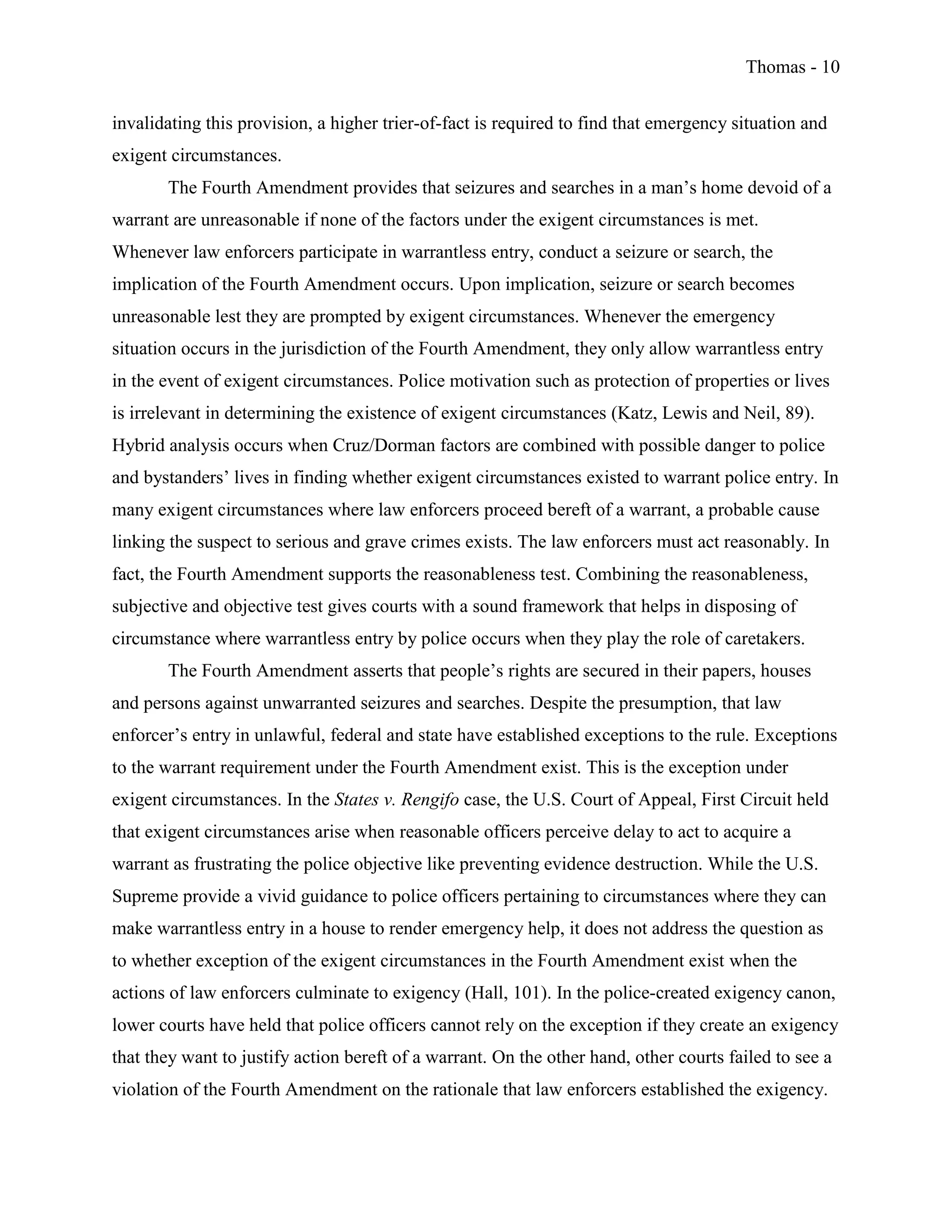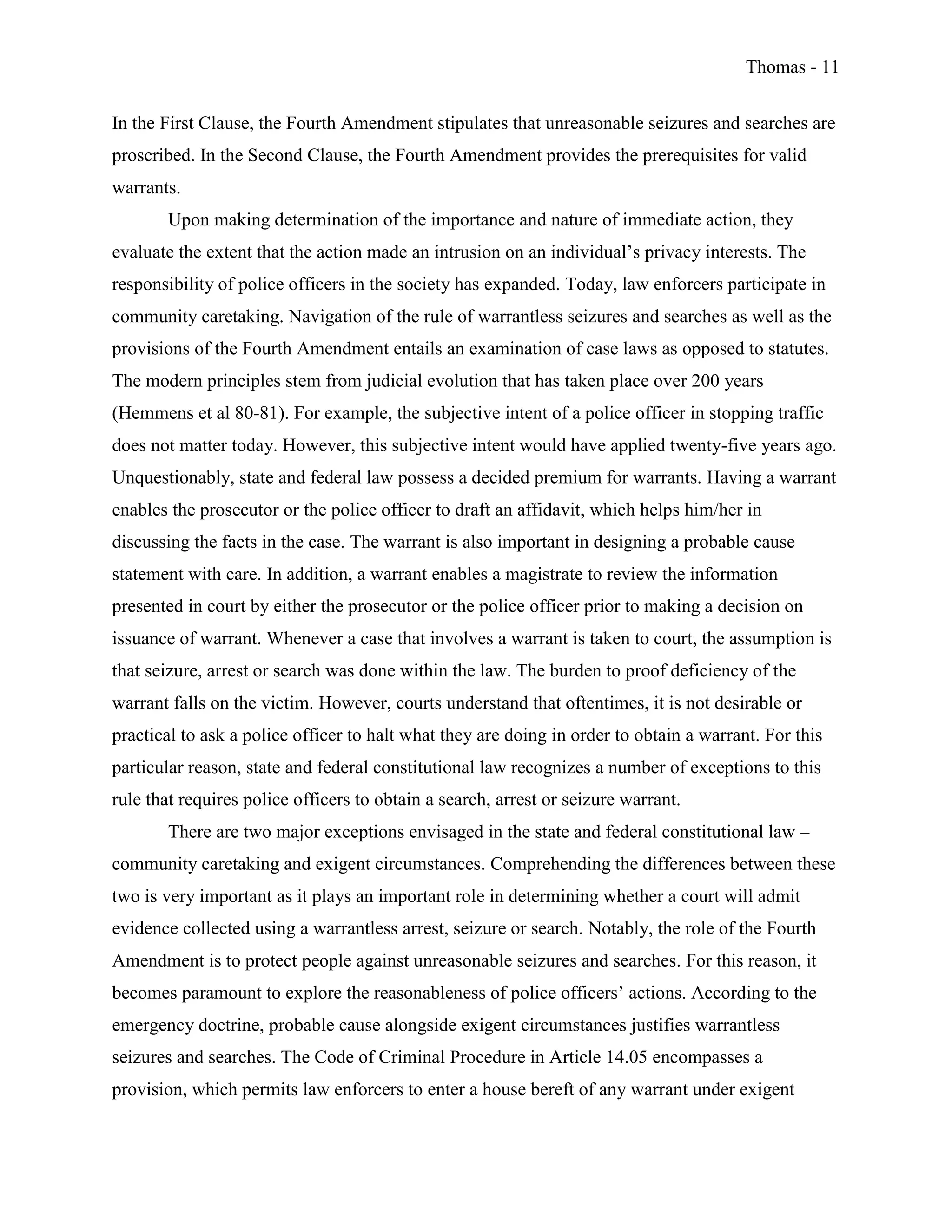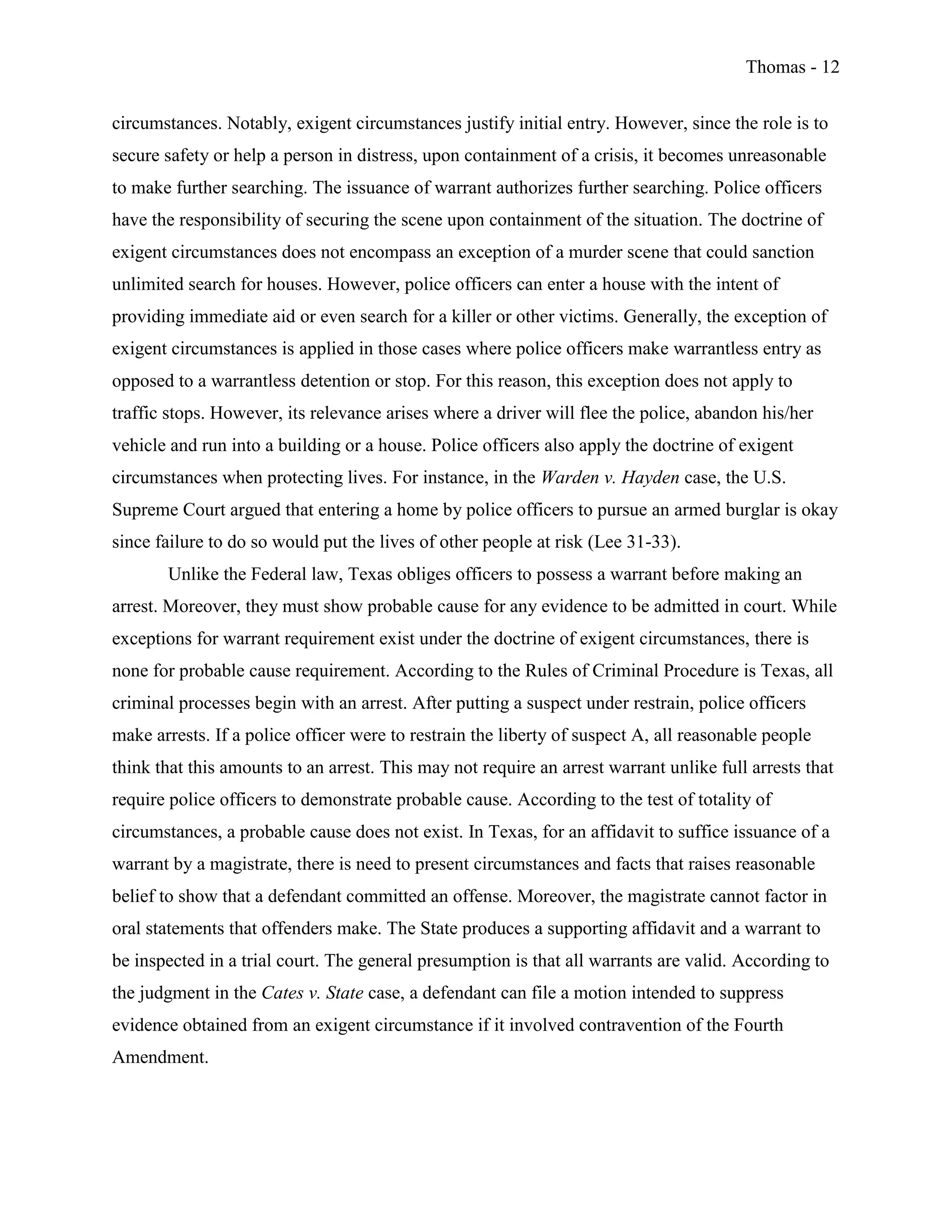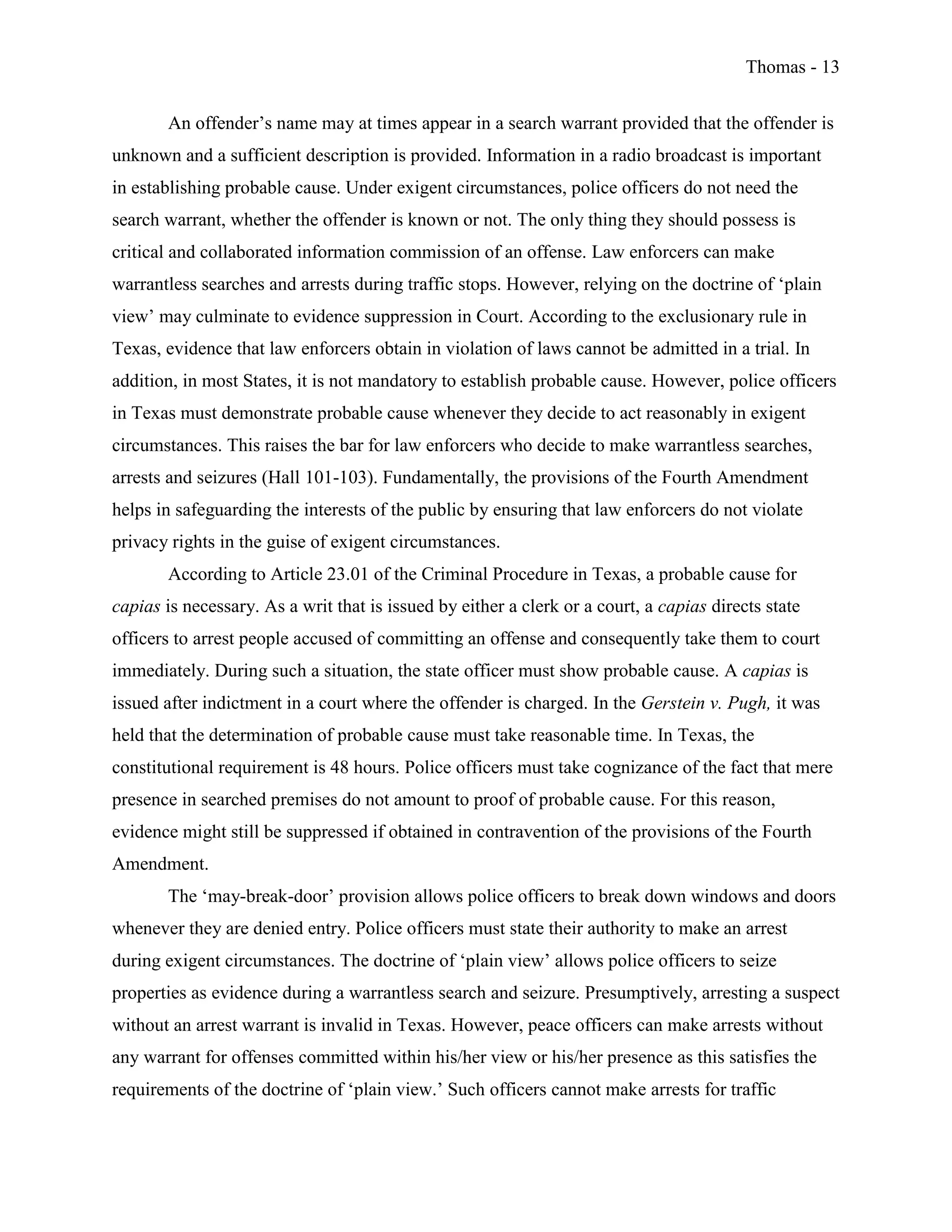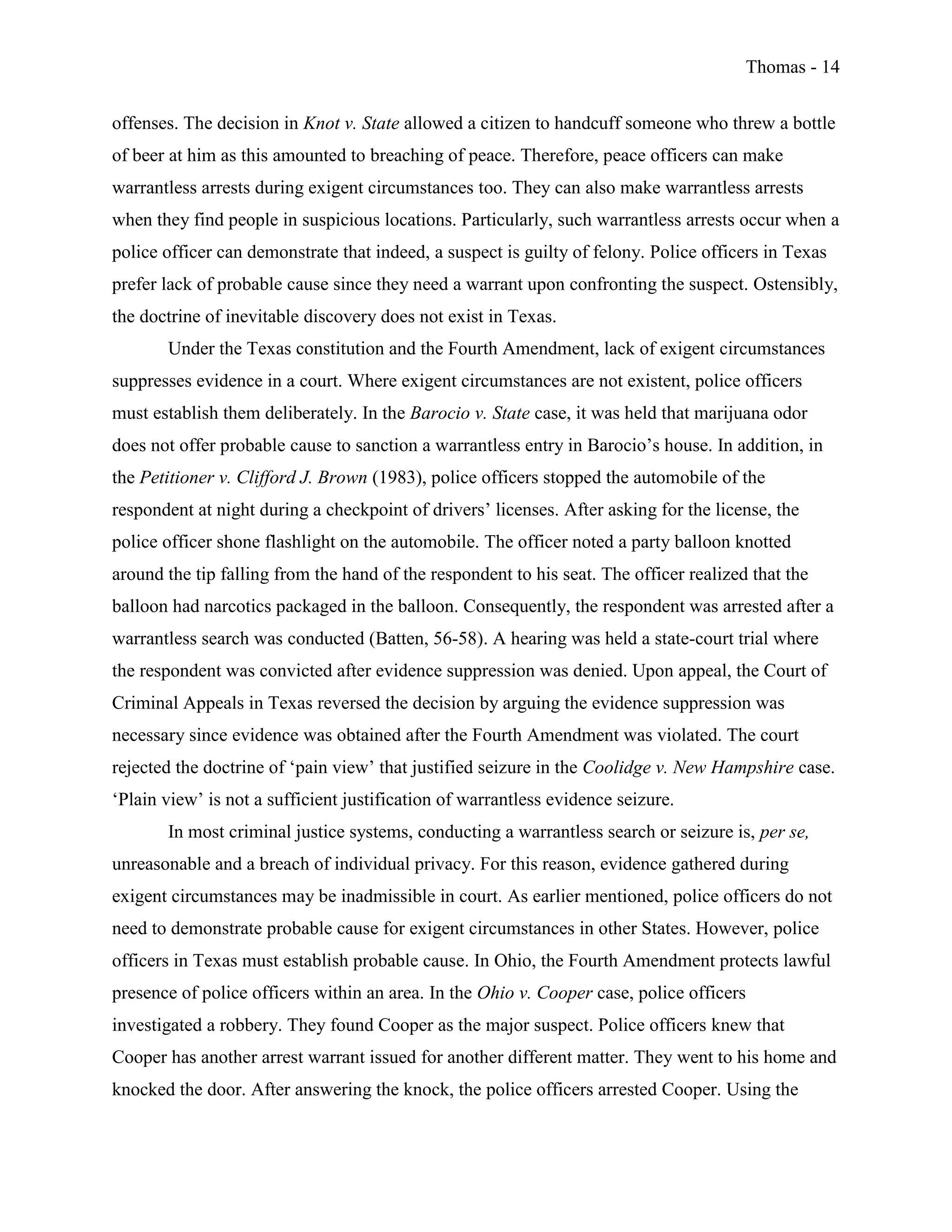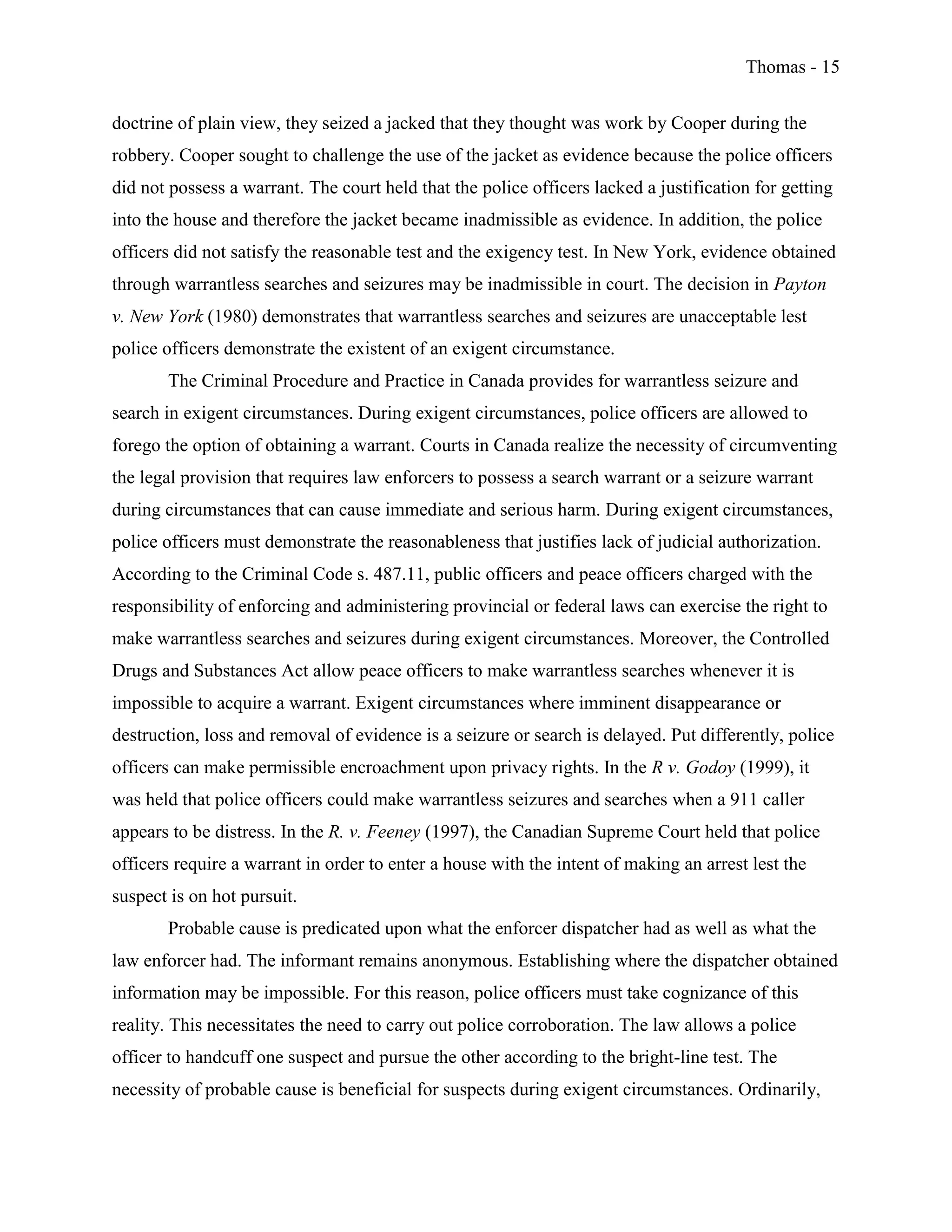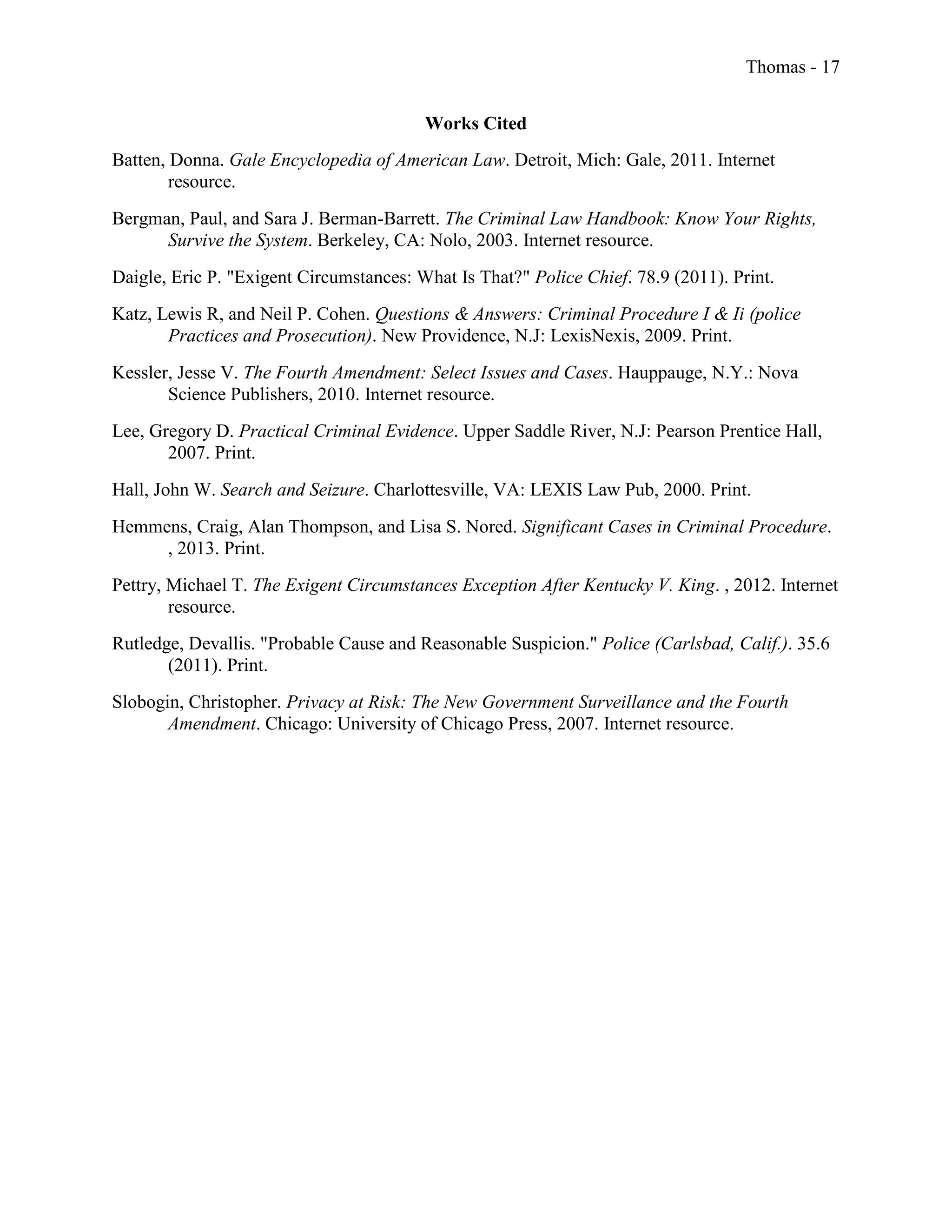This document discusses exigent circumstances as an exception to the Fourth Amendment's warrant requirement. It provides context on how exigent circumstances allow for warrantless searches and seizures when law enforcement officers do not have time to obtain a warrant due to an emergency. The document also examines factors courts consider in determining whether exigent circumstances existed, such as the gravity of the offense and risk of evidence destruction. It analyzes the balancing test used by courts to evaluate if a warrantless search was reasonable based on the need to act without a warrant versus the level of intrusion.
